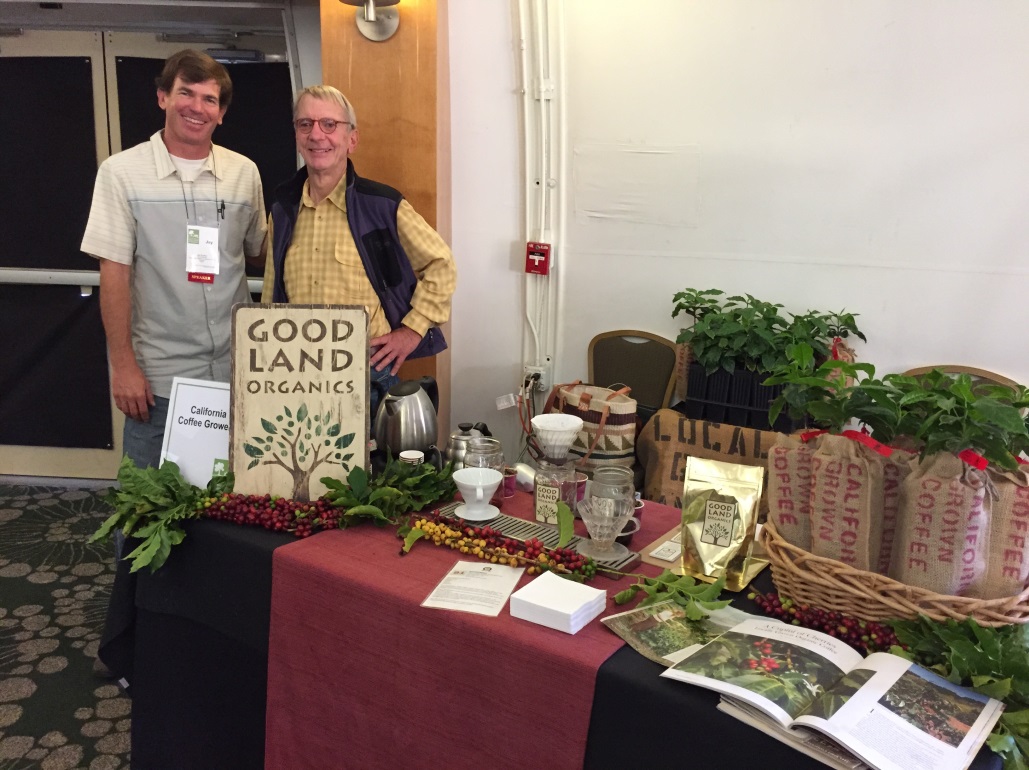Coffee is being commercially grown in California and coffee drinkers can’t get enough of the locally produced beverage, which currently retails for about $18 per cup. Anyone who is interested in growing, processing or marketing specialty coffee in California is invited to a Coffee Summit on Jan. 18 at Cal Poly Pomona.
Until recently, American coffee was grown commercially only in Hawaii. To make the most of their precious water, California farmers have begun experimenting with coffee plantings and producing beans that fetch a premium.
“There are about 30,000 coffee trees now planted on about 30 farms and that acreage will continue to grow during 2018 with new plantings,” said Mark Gaskell, UC Cooperative Extension advisor who works with coffee growers in Santa Barbara and San Luis Obispo counties. “Only a relatively small amount of the planted acreage is now producing, but the market interest and demand continue to outpace anticipated new production for the foreseeable future.”
Although coffee plants are self-pollinating, David W. Roubik of the Smithsonian Tropical Research Institute in Balboa, Panama, reported back in 2002 that coffee-bean yields skyrocket when the shrubs’ flowers are visited by pollinating insects. And in much of the Western Hemisphere’s coffee-growing neotropics, those pollinators have become honey bees.
Roubik was studying Panamanian coffee production in 1982, when the Africanized bees emerged in Panama’s easternmost tip. By 1985, the bees were conducting regular sorties into coffee groves where Roubik was collecting data.
Growers and pickers weren’t excited about the new arrivals because they kept getting stung. “I got attacked a few times, too,” Roubik notes. However, the entomologist suspected that in addition to being nuisances, the invading bees might also be offering benefits. From the beginning, he had noticed that the insects were regular visitors to coffee flowers.
Two decades later, he has quantified just how beneficial bees are. Berry yields of coffee plants increase by some 60 percent when the bees take up residence on the edges of a coffee grove, according to Roubik’s report. Each berry contains two seeds, or beans, that are eventually roasted to produce brewable coffee.
At the Coffee Summit, participants will learn about new opportunities for this high-value crop from industry professionals. Summit topics will include development of estate coffee, coffee production, pests and diseases, processing methods and marketing.
Coffee is planted from Morro Bay to San Diego, with production concentrated in Santa Barbara, Ventura and San Diego counties, according to Gaskell.
California coffee industry leaders from Santa Barbara and San Diego counties and agriculture professionals with University of California Cooperative Extension, University of Hawaii and U.S. Department of Agriculture will give presentations and answer questions.
Good Land Organics grower Jay Ruskey, who has been growing coffee in Santa Barbara County since 2002, and Gaskell will discuss growing coffee in California.
Based on their coffee variety research trials, UC Cooperative Extension advisors Ramiro Lobo and Gary Bender, both based in San Diego County, and Duncan McKee of Cal Poly Pomona will discuss which varieties are suitable for production in California.
Andy Mullins of Frinj Coffee, a cooperative of 24 farms including Good Land Organics, will discuss business and marketing opportunities for new California coffee growers.
The Inaugural Coffee Summit will be hosted by the Huntley College of Agriculture on Jan. 18, from 8 a.m. to 4 p.m., at the AgriScapes Conference Center at Cal Poly Pomona. Registration is $75 and includes a continental breakfast, lunch and coffee tasting. For more information and registration, visit http://bit.ly/2jtXyFP.









